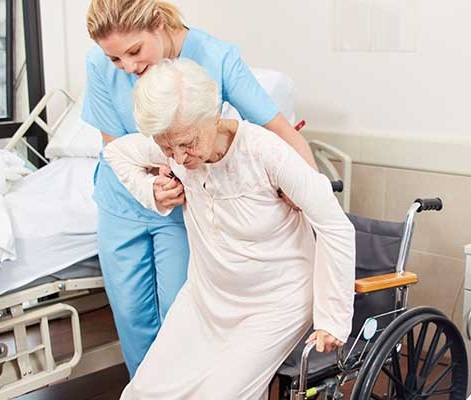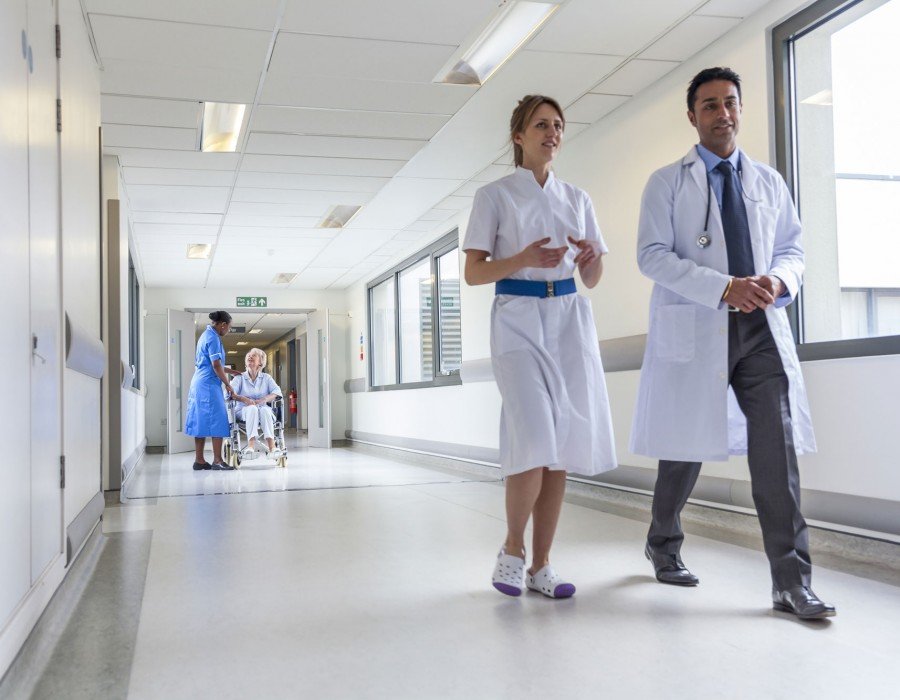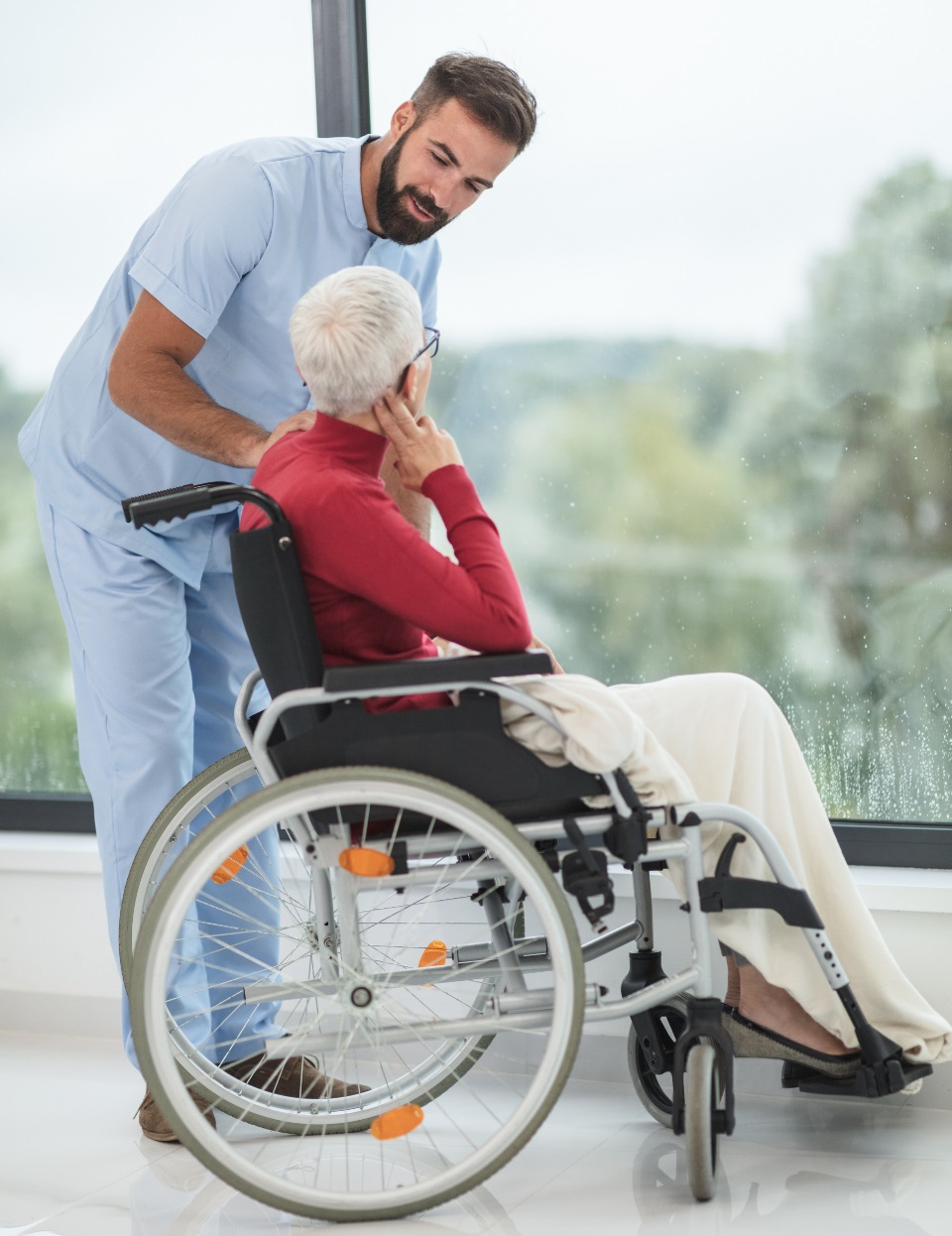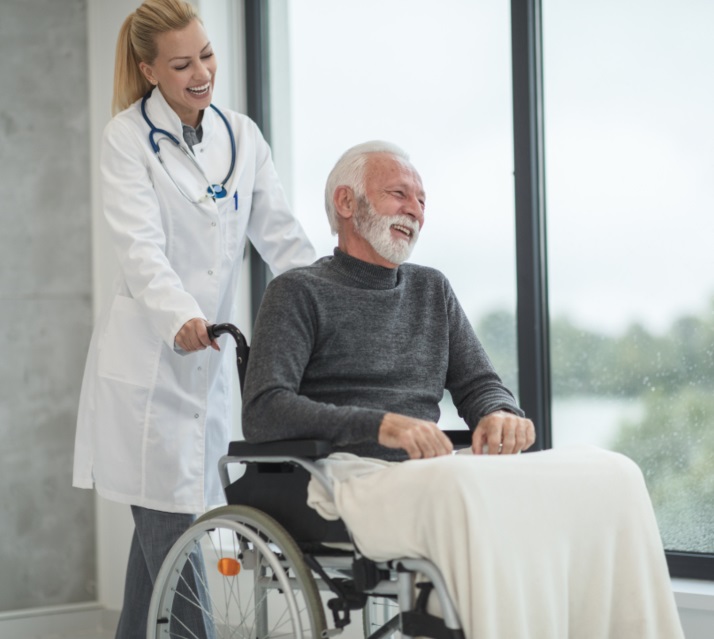

Hospitals will find many benefits by using the A.R.M.M. device with a variety of different patients. Oftentimes patients suffering from strokes, parkinsons, cancer, amputation, spinal cord injury, multiple sclerosis, heart disease, or even a joint replacement utilize hospitals on a daily basis. The goal of many hospitals is to treat patients as efficiently as possible in order to have a greater turnover therefore seeing and treating more patients. Some hospitals have limited staff especially with recent shortages due to the pandemic, thus using assistive devices to help the healthcare workers to complete their jobs is essential for maintaining efficiency in the workplace. The A.R.M.M. is the ideal device that can assist healthcare workers in patient mobility and transfer. By connecting the patient’s wheelchair to their walker they can complete ambulation training without relying on another healthcare worker to follow behind with a wheelchair. Furthermore, healthcare workers can use the drop down legs to help patients transfer from their wheelchair to their bed, toilet, chair or anywhere else they desire without putting unnecessary muscular strain and potential workplace injury. This device can be used specifically in hospital wards and outpatient clinics by nurses and therapists assisting patients with their mobility and its compact size make it easy to stow away without impacting workflow.
The A.R.M.M. is truly one of the best assistive devices for assisting healthcare professionals in hospitals and can be implemented simply without disrupting workflow or productivity.

We have tested the A.R.M.M. at a variety of different Canadian & American healthcare institutions with many different types of patients. We investigated how the ARMM can affect an individual’s physical and cognitive walking habits compared to traditional methods. We tested over 60 participants and found that their walking speed increased by 24%, walking distance by 15% all while increasing their walking confidence by 48% and decreasing their fear of falling by 20%. In turn, patients felt safer when using the ARMM device which made them walk faster and further thus improving their quality of life and independence.
Through our research and with multiple use cases The A.R.M.M. has proven to minimize patients’ falls. In fact, in all the patients we tested we haven’t had one fall when using the ARMM device and ambulating. This is because the patient feels safer when using the device and can not tip as easily since the wheelchair is attached to the walker. Senior patients have an ingrained fear of falling especially because of the negative health affects faced following a fall. The fear of falling often prevents patients from performing ambulation training. The A.R.M.M. has been proven to help improve patient self-confidence and safer walking. Hospitals can also benefit by having less repeat visits from patients whom have suffered a fall and are re-admitted..
Yes, The A.R.M.M. is also a great patient transfer device, and it can be used for a wheelchair to bed transfer, wheelchair to toilet transfer, and more transfers. The A.R.M.M.can also be used by patients in performing exercise from their wheelchair.

The A.R.M.M. can be of great help to nurses because it eliminates the need for an additional nurse to be with a patient during ambulation training and transferring. Instead of multiple nurses having to transfer or walk with a patient, the A.R.M.M. replaces the need for one of the nurses which allows the nurse to focus on other job duties and allow more patients time to ambulate.
Some leading hospital wheelchair brands include Drive-DeVilbiss Healthcare, Invacare , Medline Industries, Sunrise Medical, Karman Healthcare, & Pride Mobility. The A.R.M.M. device is compatible with almost all of the leading wheelchairs on the market, and we are continually adding new connection pieces to eventually be compatible with more and more brands. Check our Compatibility calculator before purchasing to ensure your hospital’s wheelchairs are compatible.

Procurement and chief of medicines at Hospitals frequently ask “will the A.R.M.M just be another piece of equipment that is never used or just interrupts daily the workflow of our nursing staff?” Absolutely not! The A.R.M.M.’s engineering team designed the A.R.M.M. to ensure it compliments hospital staff’s duties by making ambulation training and transferring easier and safer. To validate this, BISEP conducted focus groups to gain feedback directly from healthcare professionals. More of our testing data can be found on our clinical research page. We carefully made the A.R.M.M. easy to attach to walkers making a quick use setup and removal when not needed, and its light-and compact design make it very easy to store. The A.R.M.M. is a reasonable investment considering a pair of A.R.M.M. devices can be shared amongst many patients and wheelchairs. An important factor for any hospital procurement and purchasing department is wondering how many A.R.M.M. devices will be needed for a hospital ward? We recommend 1 A.R.M.M. device for every 10 beds and purchasing the wheelchair attachment pieces for all wheelchairs that are in the facility. For example a hospital with 50 beds and 20 wheelchairs will need 5 A.R.M.M. devices and approximately 20 connection pieces. Bulk ordering can be done and we offer large volume discounts to our purchasing customers to learn more please contact us at info@bisep.org

Hospital procurement and purchasing officers, please reach out today to learn more and see if your hospital qualifies for a free-trial.